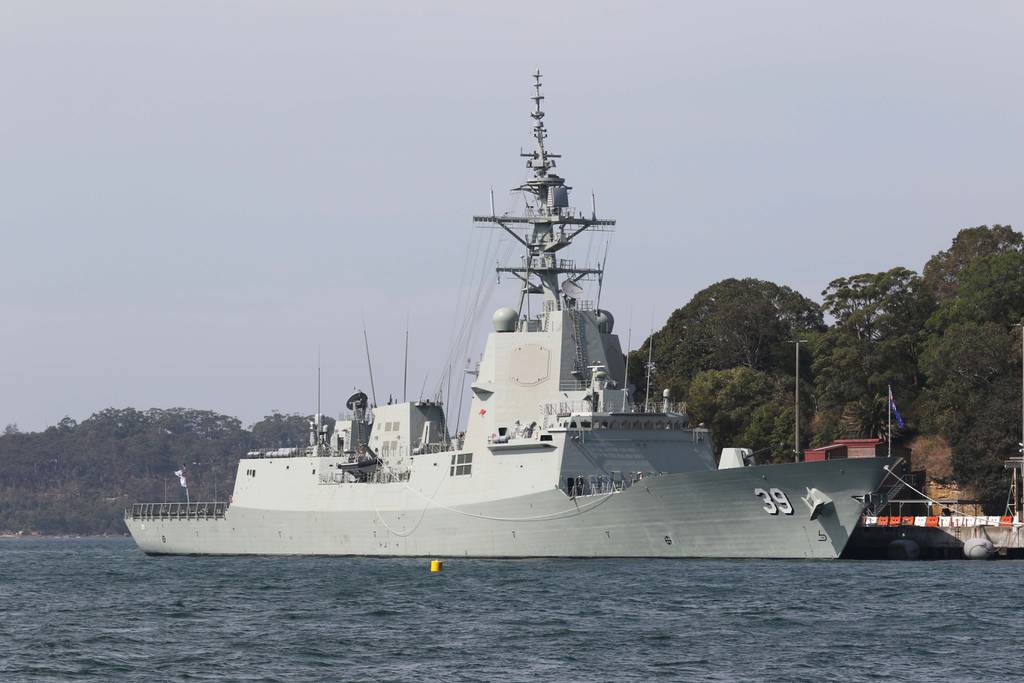
CHRISTCHURCH, New Zealand — The Royal Australian Navy will have its largest fleet since the end of World War II if it implements recommendations from a new independent review of its surface combat ships.
The government’s “Enhanced Lethality Surface Combatant Fleet” review, released Feb. 20, advocates for a flotilla of 26 warships, more than double the 11 hulls the service currently possesses. The government has accepted the recommendations except for one regarding the continuation of an upgrade for aging Anzac-class frigates.
“The size, lethality and capabilities of the future surface combatant fleet ensures that our Navy is equipped to meet the evolving strategic challenges of our region,” Chief of Navy Vice Adm. Mark Hammond said in a statement following the report’s unveiling.
Jennifer Parker, an expert associate at the National Security College within the Australian National University, told Defense News the force could achieve its new goal, even if “plans of this magnitude are going to have challenges.”
The plan
To supplement its forthcoming nuclear-powered submarines, to be acquired under the AUKUS agreement with the U.K. and U.S., the future surface combatant fleet will feature nine so-called tier 1 destroyers and frigates, 11 smaller tier 2 frigates, and six optionally manned vessels.
Tier 1 vessels will comprise three existing Hobart-class air warfare destroyers — to receive an upgrade to the Aegis combat system and the installation of Tomahawk missiles — and six new Hunter-class anti-submarine frigates. BAE Systems was originally supposed to produce nine frigates, with the first to be commissioned in 2034.
Parker, a former naval officer, said the most significant problem for the service is a looming capability gap, as the first-of-class Anzac frigate will not sail again, and a second is set to retire in 2026, meaning the Navy will have nine total warships by the end of this decade.
“Most predict an increased period of risk in the late 2020s, and that is where Australia has the capability gap,” Parker said, noting the the service should consider how to maximize its remaining capability and operational availability during this time.
With this pending shortfall, the review recommended commissioning 11 general-purpose frigates at least the size of the Anzacs to “provide maritime and land strike, air defence and escort capabilities,” the government explained in a summary of the report.
Australia plans to procure the first three frigates from overseas, with the remainder constructed in Henderson, Western Australia. The Navy has narrowed contenders to Germany’s MEKO A-200, Japan’s Mogami class, South Korea’s FFX Batch II/III, and Spain’s Alfa 3000. The government will make a selection next year, with the first delivery scheduled in 2030.
The planned six large optionally crewed surface vessels are based on an American design and feature 32 missile cells. Built in Henderson and destined to enter service from the mid-2030s, Parker said these are not traditional surface combatants because “their role will be to extend the magazine capability” of other ships.
Although Defence Minister Richard Marles said they would be crewed, Parker predicted they could end up as unmanned platforms.
“There are legal issues with lethal autonomous weapons and operating uncrewed surface vessels, so until those legal issues are overcome, the Australian government wasn’t about to announce that we’re going to have some sort of floating magazine that can launch missiles,” she said.
Apart from surface combatants, the review proposed a fleet of 25 “minor war vessels” for constabulary tasks. These include six Arafura-class offshore patrol vessels, or OPV, slashed from the original 12 that Luerssen Australia is constructing.
“The OPV is an inefficient use of resources for civil maritime security operations and does not possess the survivability and self-defence systems to contribute to a surface combatant mission,” the review stated.
The money
Marles said the entire plan is “fully funded” thanks to an additional AU$11.1 billion (U.S. $7.3 billion) allocated over the next decade, including AU$1.7 billion (U.S. $1.1 billion) in the next four years.
Parker said this amount is “probably feasible,” but added that the Treasury plans to only increase defense spending from 2027 to 2028. “I don’t know how they’re going to be able to resource those things without increasing defense spending in May,” she explained.
But even with the budget allocation, it doesn’t mean the Defence Department can spend that money, she said.
“They still need to go through the approval processes for that specific project,” she added. “I think the challenge is they need to convince the Australian public that defense requires increased spending.
Marles had promised defense expenditure would move from an anticipated 2.1% of gross domestic product by 2030 to 2.4% by that time, but Parker said that is insufficient to fund so many naval acquisitions.
The people
Amid the plans for new construction, a new shipbuilding plan is due later this year.
Parker noted many questions remain over that sector’s workforce, but a nationwide approach addressing education, migration and infrastructure factors would help.
But another challenge is crewing. The Defence Department planned to raise the number of military members by 2,201 in the 2022-2023 time frame, but instead it suffered a net loss of 1,389 uniformed personnel.
Gordon Arthur is an Asia correspondent for Defense News. After a 20-year stint working in Hong Kong, he now resides in New Zealand. He has attended military exercises and defense exhibitions in about 20 countries around the Asia-Pacific region.
- SEO Powered Content & PR Distribution. Get Amplified Today.
- PlatoData.Network Vertical Generative Ai. Empower Yourself. Access Here.
- PlatoAiStream. Web3 Intelligence. Knowledge Amplified. Access Here.
- PlatoESG. Carbon, CleanTech, Energy, Environment, Solar, Waste Management. Access Here.
- PlatoHealth. Biotech and Clinical Trials Intelligence. Access Here.
- Source: https://www.defensenews.com/naval/2024/02/28/australia-to-more-than-double-naval-surface-fleet-grow-defense-budget/



